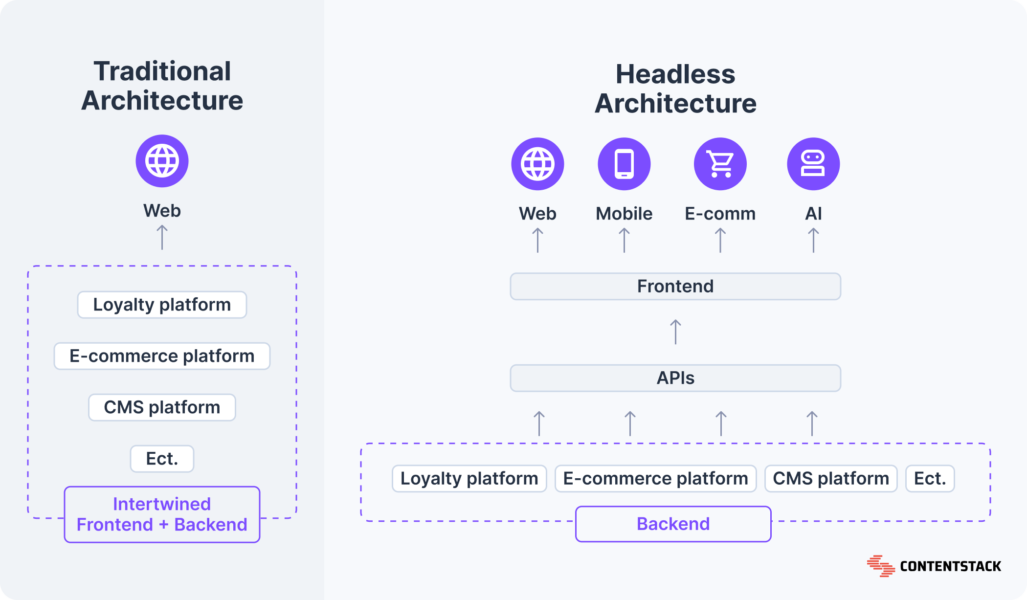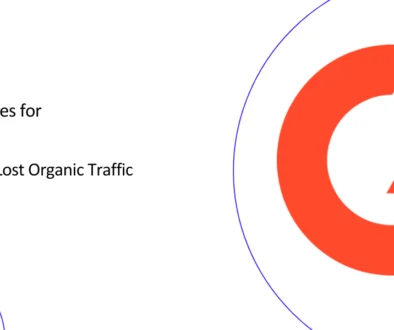Why Drupal Should Go Headless CMS by Default Configuration
It’s a proven fact that the web development landscape is rapidly shifting towards headless CMS and JavaScript frameworks. While Drupal offers a strong core and integrates with microservices, its traditional setup doesn’t reflect this trend. To stay relevant, Drupal should consider making a headless configuration the default, allowing for seamless integration with modern front-end frameworks and attracting developers accustomed to the latest technologies.
Is Drupal Becoming Obsolete? A Look at Trends in CMS and Front-End Development
The world of web development is constantly evolving, and it’s crucial to stay ahead of the curve. This analysis examines trends in Content Management Systems (CMS) and front-end technologies to see where Drupal stands.
Traditional CMS Usage on the Decline
Looking at Google Trends, search queries for “Drupal” have steadily decreased since 2004. But this decline in interest is not just limited to Drupal, but has affected WordPress, Typo3 and other traditional CMS platforms.
Headless CMS Takes Center Stage
Conversely, headless CMS solutions like Contentful, Strapi, and Sanity are experiencing a surge in popularity.
The introduction of JAMstack by Netlify in 2015 marked a turning point for headless CMS.
This architecture separates content management from front-end development, offering greater flexibility and scalability. As you can see in the Google trends graph, the interest in in headless CMS is rising and reflects a shift in developer preferences.
JavaScript Frameworks Dominate Front-End Development
The front-end landscape has also seen significant changes.
While jQuery’s popularity is waning, JavaScript frameworks like React.js, Next.js, Nuxt.js, and SvelteKit are experiencing explosive growth.
These frameworks offer a more efficient and structured approach to front-end development compared to traditional templating languages like Twig, which is Drupal’s default.
Shifting Preferences Among Developers
The popularity of React.js and Vue.js libraries further emphasizes the dominance of JavaScript in front-end development.

Find more statistics at Statista
Meanwhile, PHP, the language Drupal is built on, is noticeably absent from the tech stacks of major tech companies. GitHub reports also show a decline in PHP usage compared to the ever-growing popularity of JavaScript and Python. As a new developer, focusing on JavaScript, Python, or TypeScript would likely be a more strategic career move compared to PHP.
Cause for Concern for the Drupal Community?
The declining interest in traditional CMS platforms, the rise of headless CMS, and the shift towards JavaScript-based frameworks paint a concerning picture for the Drupal community. It’s essential for Drupal to adapt and embrace these trends to remain relevant in the ever-changing web development landscape.
Architecture Evolution: Traditional vs. Headless

In the realm of technology architecture, a notable shift is occurring from traditional monolith structures to more agile and modular setups. The traditional Monolith Architecture, seen in systems like Drupal, WordPress, and Typo3, consists of a content management system, a plugin system for additional features, and a front-end system. However, this architecture is on a decline as newer approaches emerge.
Traditional Monolith Architecture
The traditional monolith architecture, prevalent in platforms like Drupal, WordPress, and Typo3, is characterized by a unified system handling content management, plugins for added functionality, and a front-end interface. While widely used in the past, this architecture is now facing a decline in popularity.
Headless Architecture
In contrast, the headless architecture, exemplified by systems like ContentStack, offers a more modular approach. In this setup, the front-end system is decoupled from the backend, allowing for greater flexibility and scalability. Data is accessed through APIs, enabling seamless integration with various microservices.
Microservices Integration
ContentStack’s architecture incorporates microservices like Google Analytics, Commerce Tools, Marketo Forms, and others to enhance functionality and data management. These microservices are integrated and aggregated to provide APIs for building decoupled front ends using popular JavaScript frameworks. This setup allows for direct communication with microservices, a feature not typically found in traditional architectures like Twig rendering.
Conclusion
Proposing a Modern Approach for Drupal
In the evolving landscape of digital experiences, Drupal stands as a robust headless core platform, often overlooked for its capabilities in decoupled systems. While Drupal inherently supports a MACH (Microservices, API-first, Cloud-native, Headless) architecture, it is not commonly perceived as a headless solution, which poses a significant challenge for its adoption in modern contexts.
Drupal Needs to Be Headless by Default Configuration
Here’s the crux of the issue: Drupal can be headless, but it’s not the default configuration. This traditional perception hurts Drupal’s adoption in the headless CMS space. A recent Reddit thread on React subreddits exemplifies this. When asked about preferred headless CMS options, Strapi and Contentful were mentioned, but not Drupal, despite its suitability for decoupled systems.
How can Drupal reclaim its rightful place as a headless leader?
Here are 3 suggestions that can help in repositioning of Drupal as a completely Headless CMS
- Embrace a Fully Headless Approach: Revamp Drupal’s theming layer to truly go headless. This would involve seamless integration with major front-end frameworks (React, Vue, etc.) through standard SDKs.
- Modernize the Admin UI: Drupal’s admin interface feels dated compared to sleek, modern headless CMS options. A refresh would enhance user experience and attract new developers.
- Embrace GitHub: Moving Drupal’s codebase from GitLab to GitHub aligns with the preferences of most JavaScript developers. This fosters a more welcoming environment for the next generation of Drupal contributors.
Drupal Needs Rebranding As a Headless CMS
While some might see these suggestions as marketing tactics, consider it a necessary rebranding that redefines Drupal’s image as a powerful headless core platform for building composable digital experiences. Highlighting this strength through clear messaging and strategic changes can attract new users and secure Drupal’s future.
This shift not only aligns Drupal with current industry trends but also opens doors to a wider audience, particularly attracting younger developers who are well-versed in JavaScript, the predominant language in modern web development.
This shift wouldn’t diminish Drupal’s core strengths. Drupal can still leverage its existing microservice ecosystem, but with a more modern, developer-friendly approach.
Meet NodeHive: A Drupal-based CMS That Is Headless by Default Configuration
If you are looking to build a headless Drupal solution, then NodeHive should be in your consideration. NodeHive is a headless CMS solution that leverages Drupal’s core and contrib features (contributed modules) to provide a streamlined, out-of-the-box solution for building headless Drupal applications. With NodeHive, you can easily create headless multisite experiences with a single command.
As a Drupal-powered headless CMS, NodeHive allows you to serve multiple fully decoupled front ends with ease. The system is open source, allowing you to try it out for yourself and customize it to your needs.
NodeHive offers both a SaaS solution and a self-hosted option for those who prefer to keep their data in-house. The NodeHive Headless CMS provides two GitHub repositories: one for the back end and one for a Next.js starter front end. This makes it easy to start building front ends immediately, without having to set up a separate development environment.
Whether you’re a seasoned Drupal developer or just getting started with headless CMS solutions, NodeHive offers a powerful and flexible platform for building modern web applications.
NodeHive, with its Drupal Layer, utilizes a range of microservices such as Point of Sales systems, Campaign Monitor, Salesforce, and Vimeo providers. These microservices interact with Drupal, which serves as a core headless platform, offering web forms and commerce capabilities. The flexibility to integrate external microservices adds depth to NodeHive’s architecture, enabling tailored solutions for diverse front-end requirements.
How Manmash Consulting Can Help?
Our Drupal consultants are experienced in in NodeHive and Deadless Drupal application or web development. We also offer Drupal 10 migration service. For a free consultation session, please contact Manzar Mashhood, CEO and Founder of Manmash Consulting on his Linkedin, Whatsapp (+923331200550) or simply visit our Contact page and fill out the form there.




